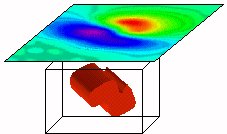Conclusions

Geophysical surveys are non-invasive techniques for obtaining information about subsurface materials and their distribution or structure. The results of surveys can often be used directly or after some filtering prior to presentation as graphs or maps.
The survey data, perhaps with some filtering, can sometimes be used to answer the question of interest. Generally, however, the information is insufficient and more quantitative analysis is required. The data need to be inverted to generate a distribution of the physical property. The inherent nonuniqueness of the inverse problem is a complicating factor, and this has motivated the development of different inversion approaches. Irrespective of details, the application of formal inversion techniques to conventional geophysical data has contributed decisive information in the resolution of mineral exploration and geotechnical problems.
Mineral exploration, petroleum, and engineering organizations now routinely apply modern inversion techniques to geophysical surveys, such as gravity, magnetics, resistivity and others. Instead of applying ad-hoc methods to the interpretation of raw or filtered data, geoscientists can now produce a range of acceptable subsurface models based on rigorous and well-defined criteria. The value added through the provision of well-constrained, easily visualized 2D and 3D models of subsurface physical properties means that geophysical surveying can be more cost-effective, allowing decision-makers to act with more confidence in assessing the risks and costs of projects requiring subsurface information.